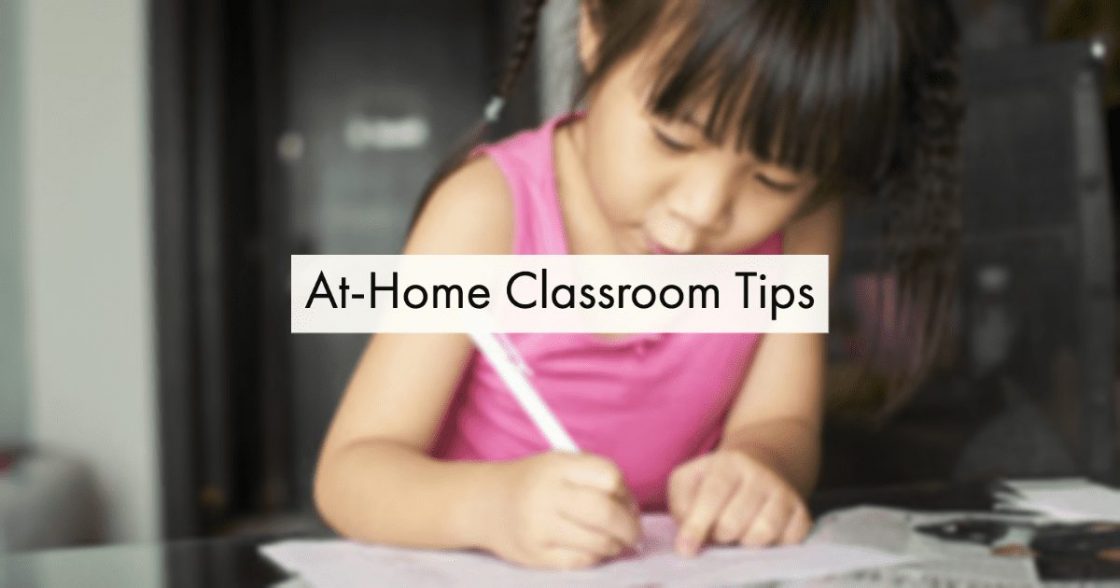Kids and adults alike are spending more time at home. Elementary, middle, and high school students have a mix of in-person and at-home remote instruction while many adults try to work at home so they can help their children through the educational process. For many parents, juggling work schedules, video-style lessons, homework, reading, and daily activities has become increasingly difficult. To make remote learning easier for your children, look to these seven tips for setting up a comfortable and efficient at-home classroom so your kids can succeed.
Choose a Spot in Your Home With Minimal Distractions
Doing schoolwork and attending video-style lessons from a bedroom can become a problem. Children’s bedrooms are littered with distractions, such as their bed, a TV, and toys. Choose a different area or room in your home that provides the best chance for your kids to focus. The kitchen table may be a good spot, or perhaps setting up a table in the living room could work, too. Keep in mind that working in the kitchen all day doesn’t allow for snack and meal breaks to be taken place in a different area. If you choose a different room, then the kitchen can serve as an at-home cafeteria where your kids can relax, eat, socialize, and take a break from their schoolwork.
Consider Redoing a Room for Educational Purposes
If you have an extra room in your home that can be transformed into a classroom, that would be ideal. For example, turning your finished basement into a classroom would be perfect. It would also help you sell your home down the road, as a well-priced home could sell within three to 10 days in a high-demand seller’s market, especially if it included a featured room such as this one.
Organize and Set Up the Classroom to Retain Comfort
Once you’ve found a good area or room, clean and organize it so it can serve as a classroom. As for furniture, a table with comfortable seating will be the best way for your kids to spread out their materials while also enjoying the comfort that learning from home can allow. Be sure there are outlets for laptop or computer plug-ins, and prioritize proper lighting as well. Utilizing soft overhead lighting and a lamp where your children sit allows for a more relaxed aura in the room, which can be beneficial for students during school hours.
Hang a Calendar Outlining School Assignments and Deadlines
If your children are stuck learning from home all day five days a week, then creating a calendar for your home is something you should consider. A calendar is especially handy so your kids can see when they have assignments and projects due, tests, quizzes, video meetings, and check-ins with their teachers. Keeping their school schedule and assignments organized is important for your child to be successful.
Create a Schedule that Accommodates Other Daily Tasks
Depending on your children’s needs, displaying a schedule that specifically lays out what your kids need to get done throughout the day may be helpful for them to stay on track. Accommodating other daily tasks that need to be done at home would be a good idea to include because your children are used to completing certain tasks before, during, and after school. For example, if you have a child that has braces, which on average are worn for about two years, then adding a “brush and floss teeth” task to their schedule after breakfast may be important to include. Setting the kitchen table for lunch, sharpening pencils, reading time, and breaks may be other tasks you consider writing out as well. These reminders are especially important for children who are forgetful or who are struggling to adjust to their different school schedule and setting.
Incoporate Fun Decorations and School Supplies
Learning from home is a struggle for many children. To make it more fun and to make it feel more like the school classroom they’re used to, hang some educational and inspirational posters and paintings. If your children love a specific book series, including a poster about that series that includes a motivational quote would allow their at-home classroom to feel personalized and fun. Adding colorful pencil holders and personalized hooks for their backpacks would also be creative additions that would allow your children to feel like they’re in their typical classroom, too.
Include Space for Parents and Grandparents to Help
Be sure to also include space for adults to help your at-home students learn. Only 3.6% of people over 65 years old are in nursing homes, meaning a large percentage either live in their own home or with their children. If your senior parent or parents live with you and are willing to help your children with their schooling, then take them up on the offer. While learning at home is feasible, obtaining help is important when children have questions or curiosities that only adults have the answers to. Purchasing a circular table would especially be helpful, as many teachers have these kinds of tables in their classrooms to accommodate small-group work and discussions.
As you are adjusting to at-home schooling, so are your children. Keep their needs in mind when it comes to learning, organization, and receiving help. Incorporate these suggestions when setting up a comfortable and efficient at-home classroom, as these traits are important for your kids to obtain a successful at-home educational experience.






